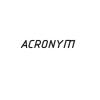Levi's 501 - a visual guide
-
hello 2024!
supertalk is free to browse as a guest. You need to be a member to participate in discussions or buy and sell on the classifieds.
Classifieds listings are now free for members.
supertalk is now upgraded to //// supertalk 8 ////
______________________________________
Current new membership is $US 12 ONE TIME FEE. NO RENEWAL FEE.
______________________________________
You can also become a premium superseller or supermember. Businesses who want to promote their brand and products need to become a supersponsor. superfuture® is privately owned and has been online continuously for 25 years. supertalk has been online for 21 years and is a digital cockroach that will survive all current and future apocalypses.
-
Top 10 Active Viewed Topics
-
- 24247 replies
- 6205731 views
-
- 26769 replies
- 6118605 views
-
- 24736 replies
- 4446327 views
-
- 22925 replies
- 3480816 views
-
- 13815 replies
- 3352242 views
-
- 10650 replies
- 3140878 views
-
- 21194 replies
- 2808367 views
-
- 13280 replies
- 2738763 views
-
- 11475 replies
- 2423136 views
-
- 8534 replies
- 2422329 views
-











Recommended Posts
Join the conversation
You can post now and register later. If you have an account, sign in now to post with your account.